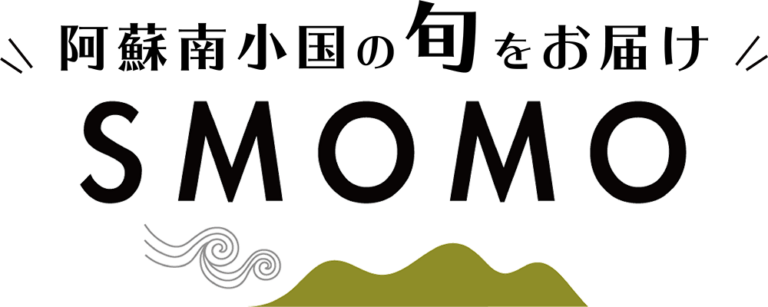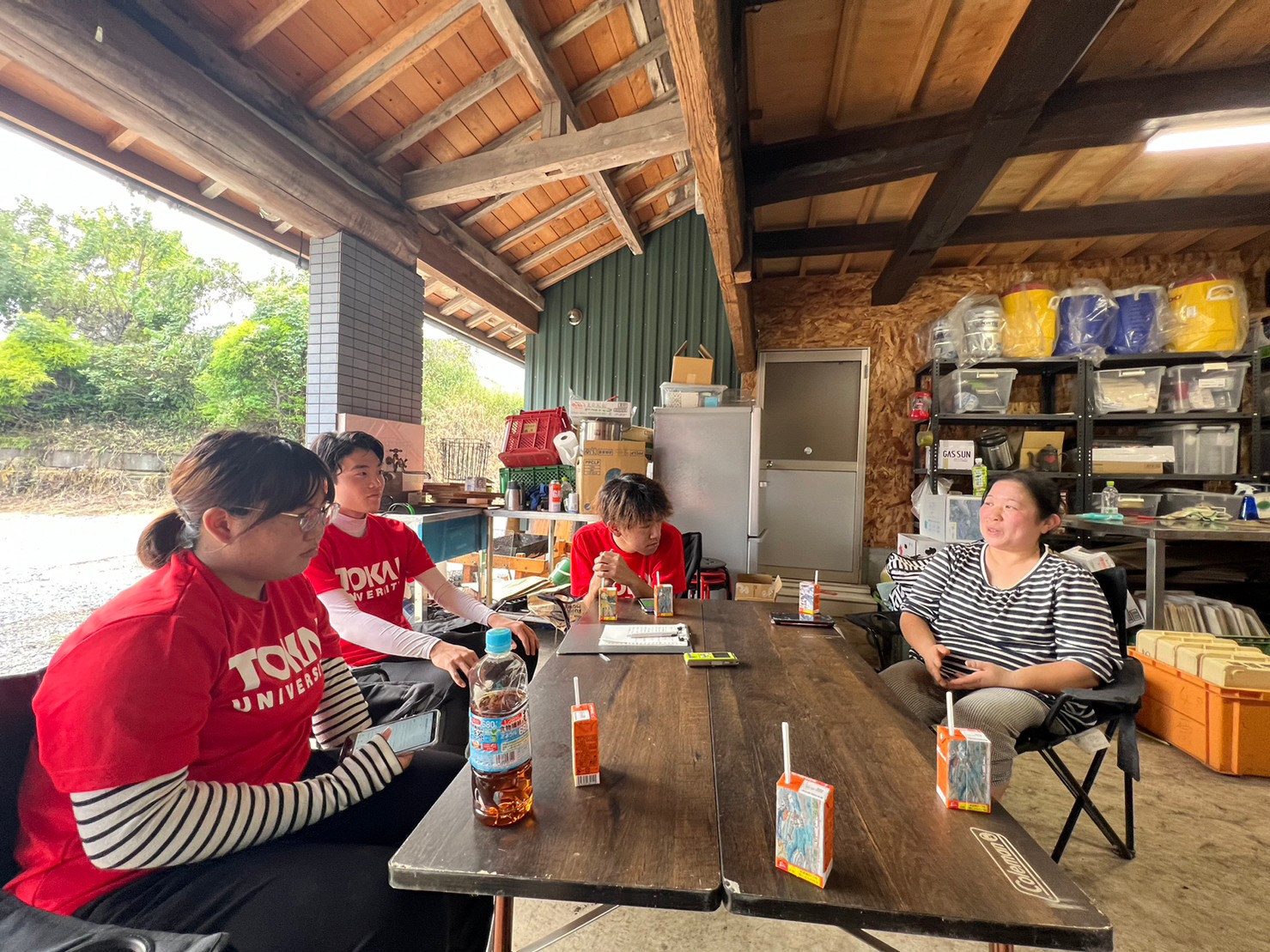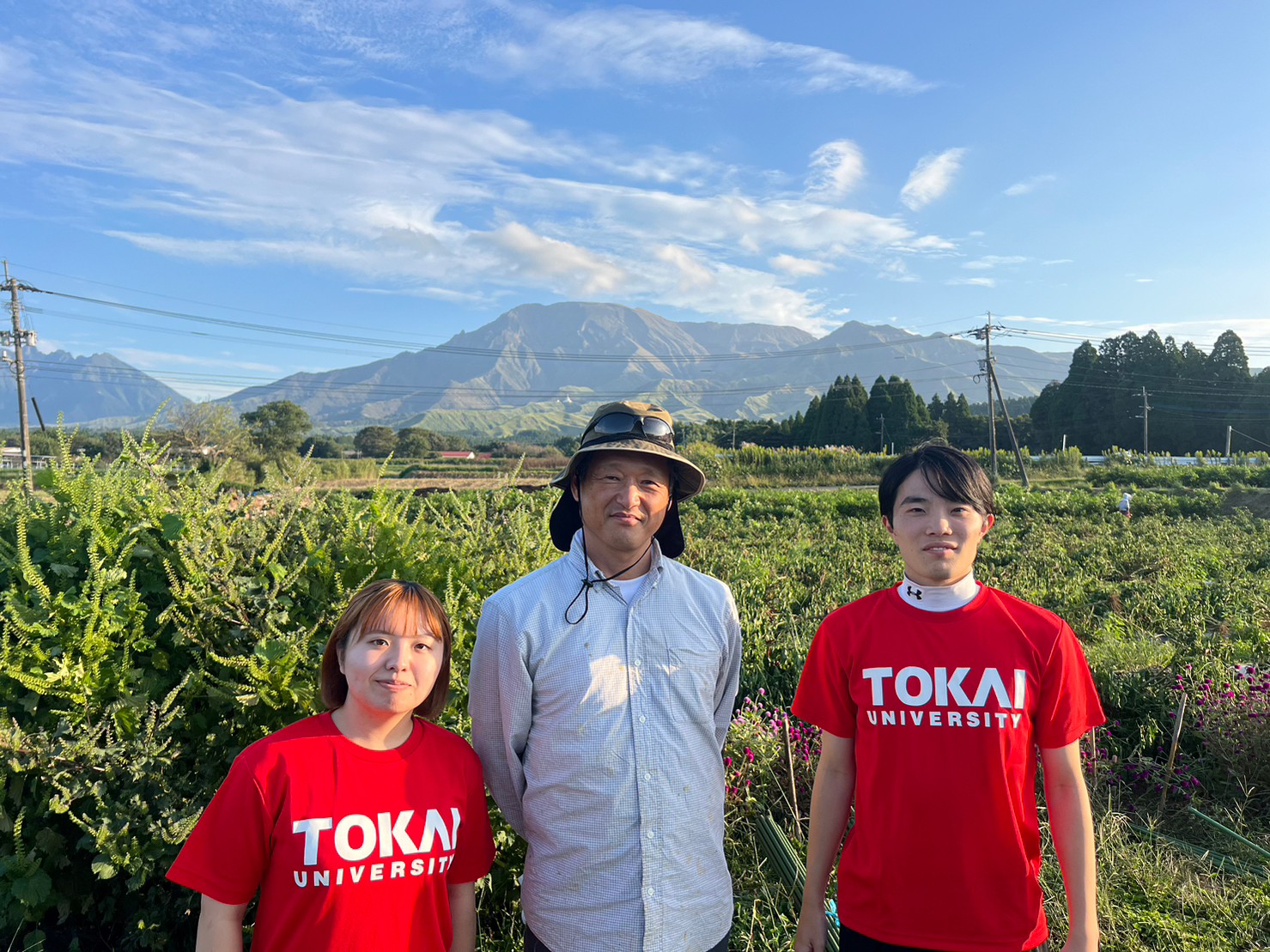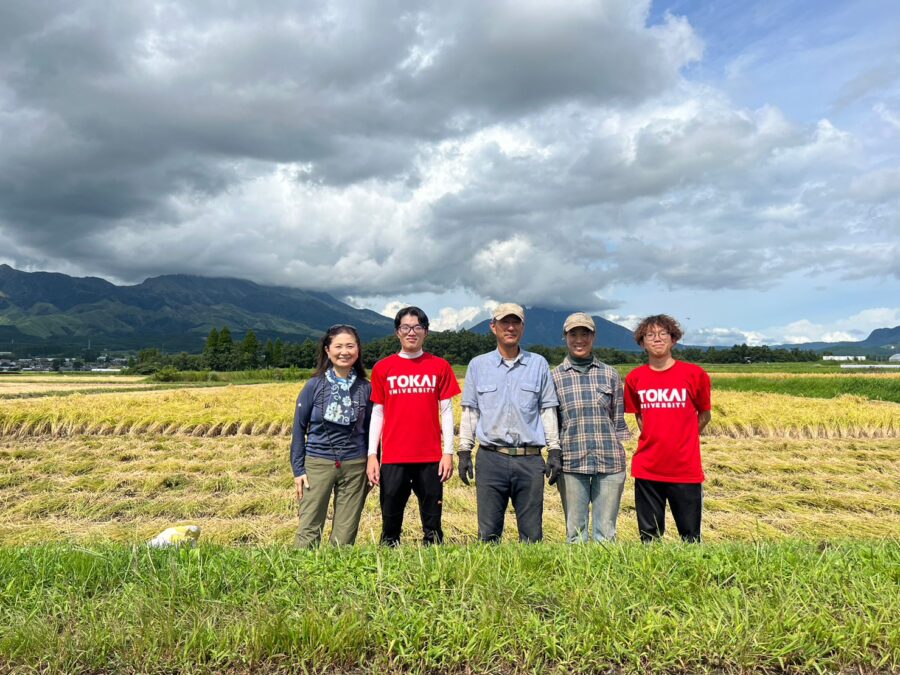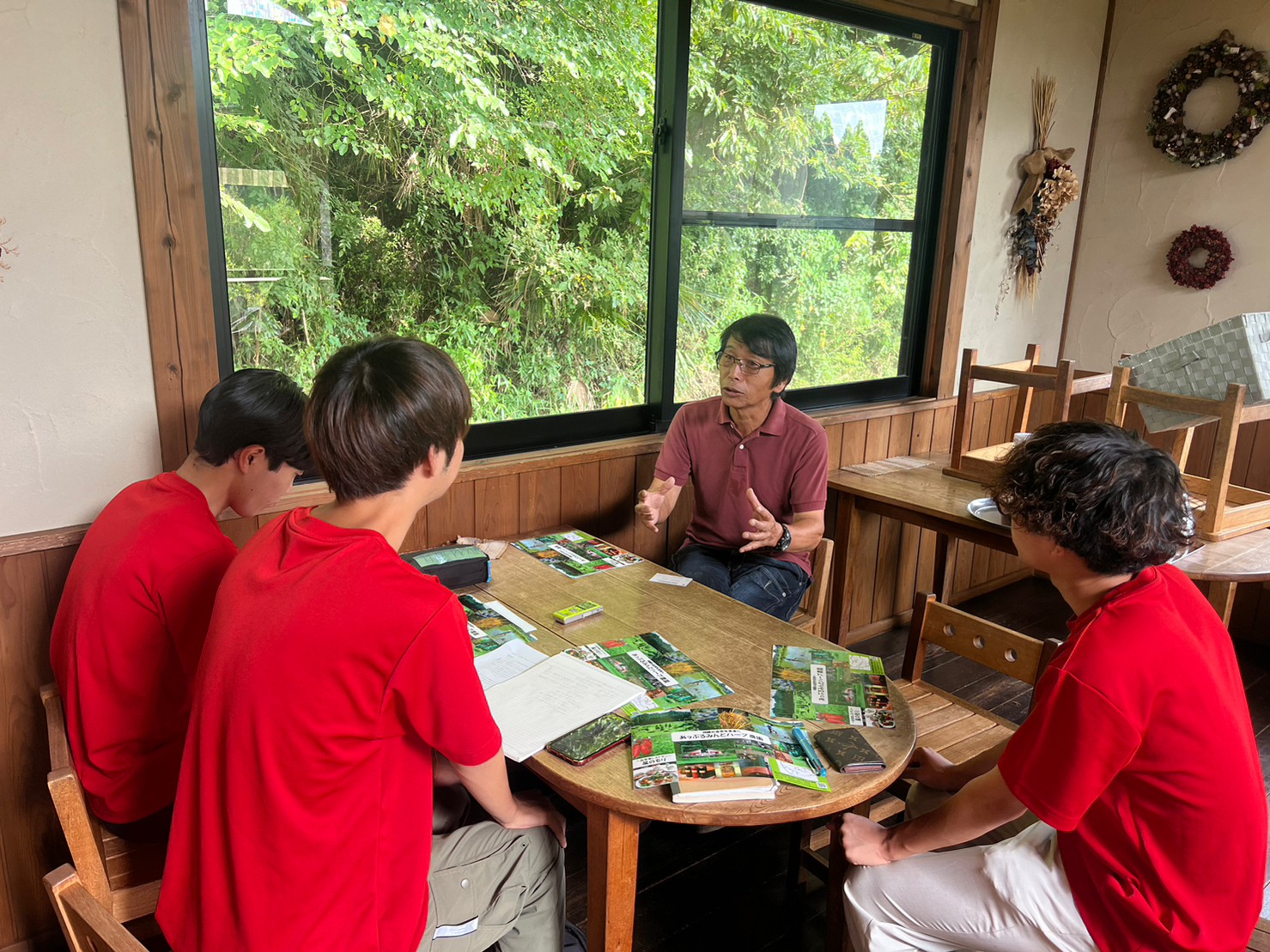Celebrating the 10th anniversary of “Global Agricultural Heritage Aso” certification
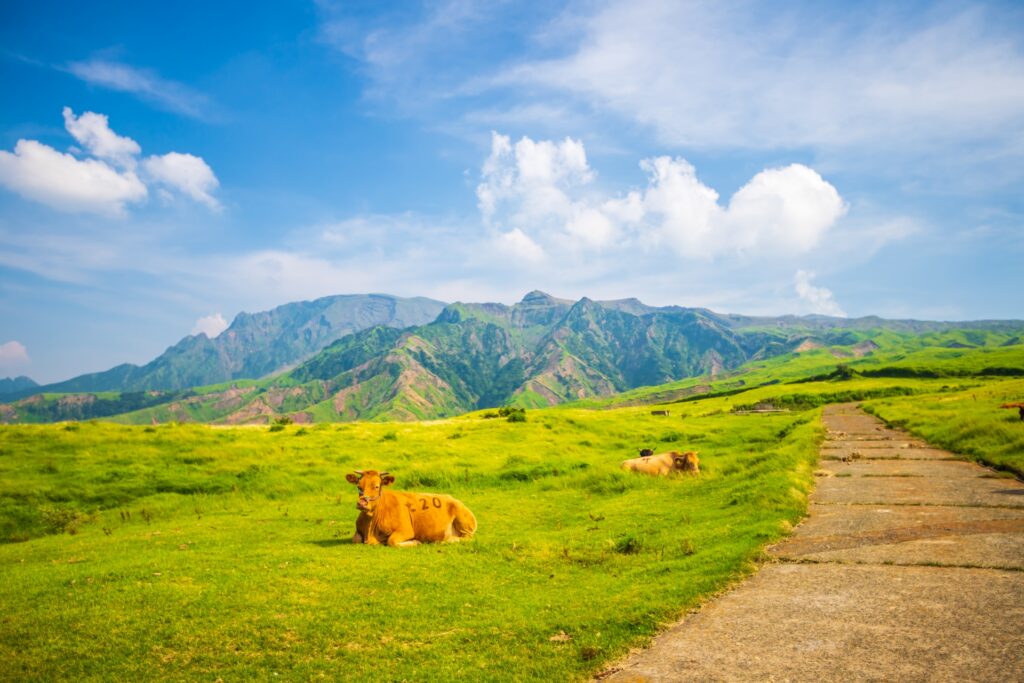
The grasslands of the Aso region have been maintained through agriculture such as burning and grazing for more than 1000 years.
Aso, which has grown together with grasslands, is blessed with diverse agriculture, rare flora and fauna, and traditional farming culture.Aso was recognized as a Global Agricultural Heritage Site in May 2013 as being of global value. We are celebrating our 5th anniversary.
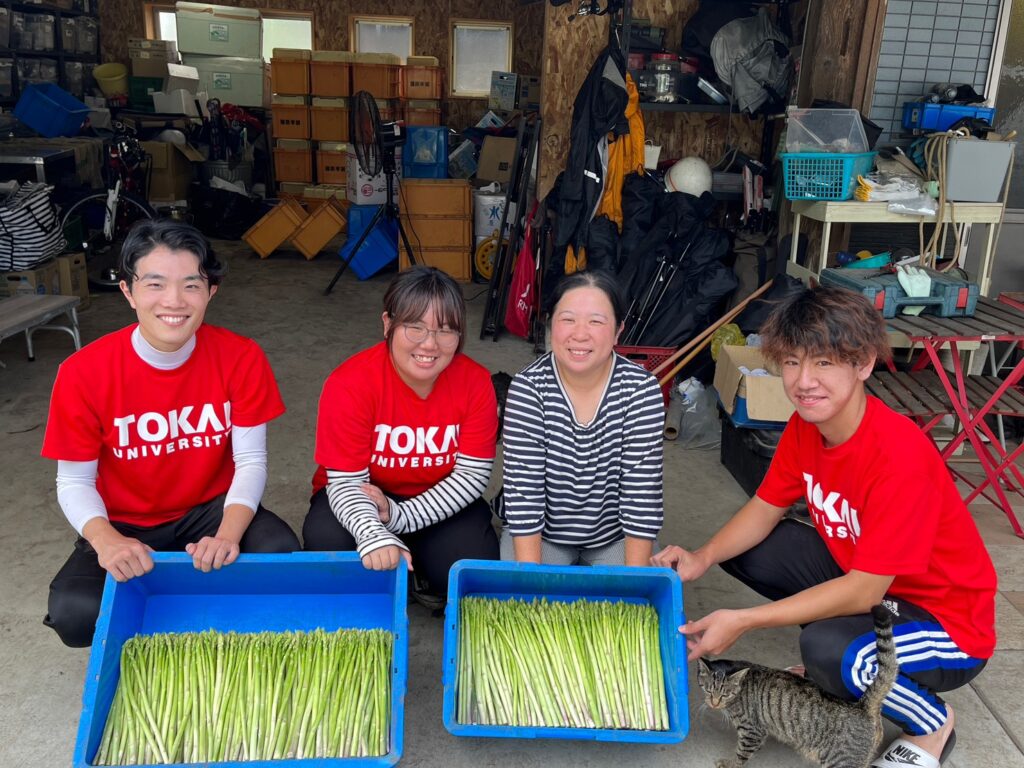
The Tokai University Ecotourism Research Group conducts research activities to learn about ``ecotourism,'' a system that preserves and utilizes regional treasures.
To commemorate the 10th anniversary of the World Agricultural Heritage designation, students from the Ecotourism Study Group visited and interviewed people who support Aso's agriculture in order to learn more about the agriculture, culture, and history that are the treasures of the Aso region. .
[Interview with a farmer who produces exquisite asparagus in Minamiaso Village]
It may be sudden, but when you buy vegetables, have you ever thought about the farmer and where they are grown?Honestly, I don't. . .
This time, we interviewed Misato Fujiwara, who grows asparagus in Minamiaso Village.
I heard valuable stories that I don't normally get to hear, and I learned a lot from them.The more I learned about asparagus, the more I became interested in it, and I would like to share with you the story of Mr. Fujiwara.
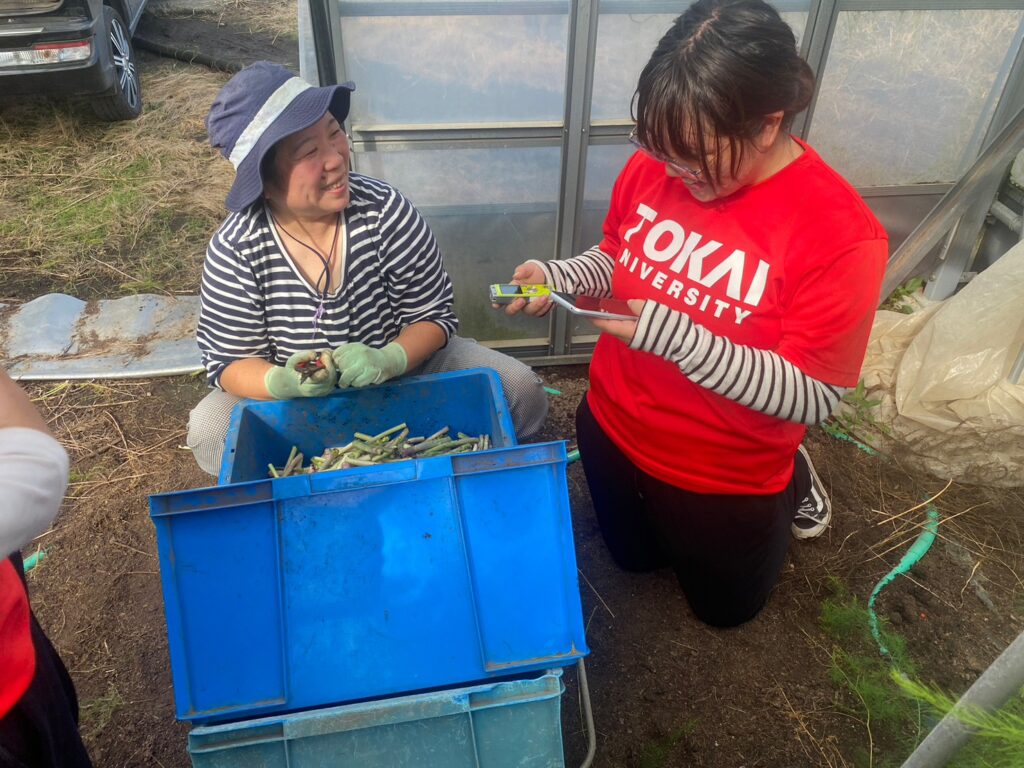
This year marks 18 years since Misato Fujiwara started farming after getting married.The thoughts behind the Fujiwara family's asparagusWe talked about this.
---What made you decide to grow asparagus?
Misato Fujiwara:I was originally growing rice, but I thought it was impossible, so I thought I had to do something, and that's when I came up with the idea of asparagus.Farming is basically the same as gambling.There was no guarantee that a typhoon wouldn't come, and I didn't know if the temperature was right for Aso, so I started by just relying on my intuition.However, I thought that if asparagus was grown in a greenhouse, it wouldn't have to be as affected by nature as much as rice.
――Was Mr. Fujiwara the first to start an asparagus farm in Minamiaso Village?
Mr. Fujiwara:I agree.In Minamiaso Village, seven other households started growing asparagus at the same time as ours.
--Didn't it take courage to start growing asparagus when you didn't have a greenhouse or equipment yet?
Mr. Fujiwara:I agree.But I had started cultivating it 10 years ago in another area, and I had an experienced master who taught me a lot of things, so I thought I wouldn't make a mistake.
Farmers of other vegetables each have their own secret techniques and don't share information, but there are only a few farmers growing asparagus, so everything is just starting, so everyone is actively working together. We are exchanging information.
---What are the strengths of Minamiaso Village's asparagus?
Mr. Fujiwara:Does this mean that there is no rival nationwide in April, when farmers in Minamiaso Village ship their products?Due to climate issues, when Aso ships, farmers in other prefectures who are cultivating in open fields are not able to ship in time.
Asparagus's spring peak is from May to June.They germinate when the temperature rises to 5℃, so if grown in a greenhouse, they can be shipped from March to April.The lower the competition rate, the higher the unit price, so you can sell in the early months when you can't get anything else.
By the way, there are many water sources in Aso that are necessary for cultivation, and it is suitable for cultivation because it is close to the source and has a lot of minerals.
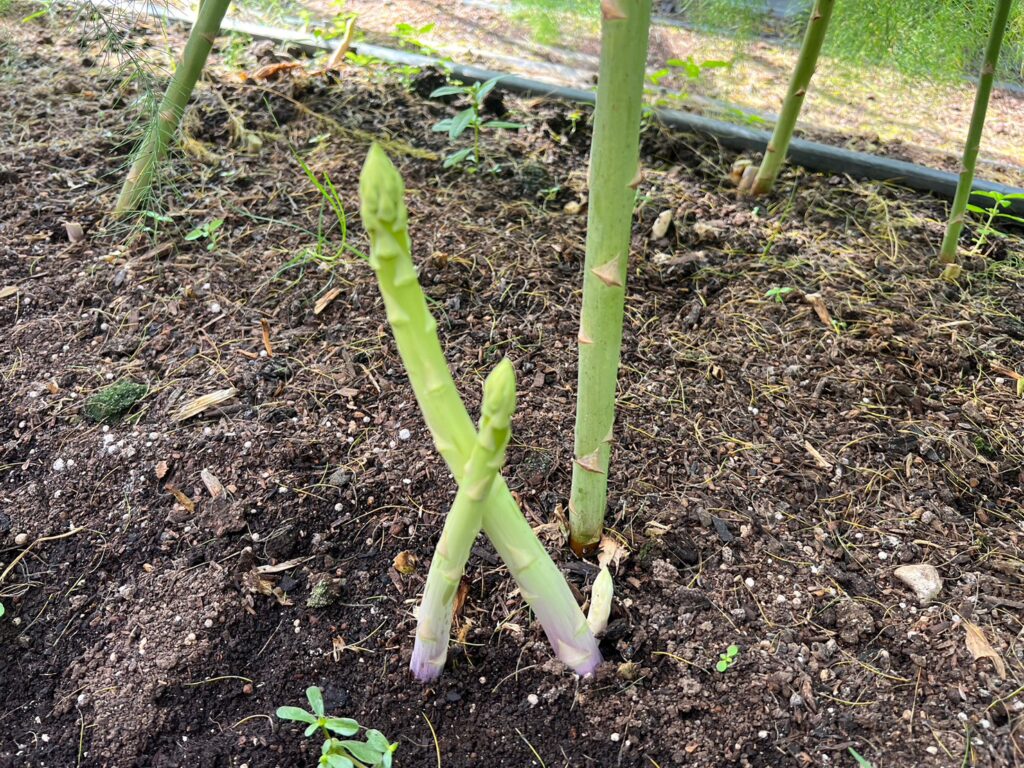
---What is the most difficult thing?
Mr. Fujiwara:I guess the most difficult thing is that you have to harvest every day without any breaks.While raising a child, I have to work all day long until the shipment is finished.
In spring, we harvest twice a day.When I'm in good shape, I can grow 1cm a day.Therefore, a bundle of 2 grams can yield 10 tons per year.
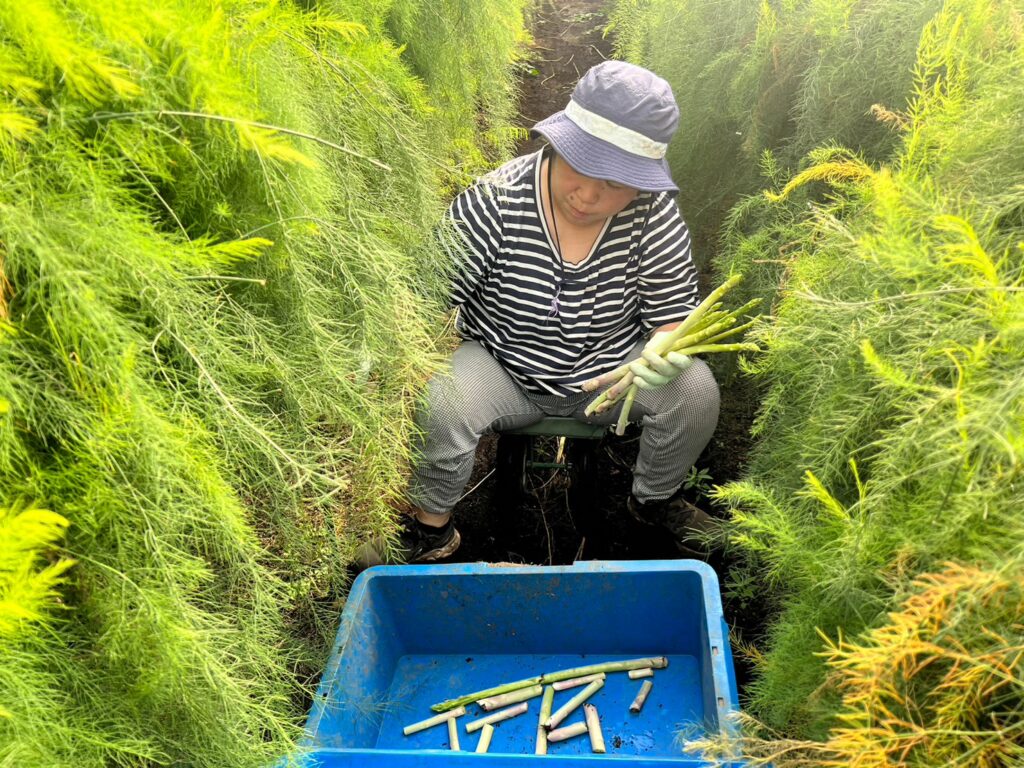
---Is there a difference between asparagus harvested in spring and summer?
Mr. Fujiwara: In terms of ingredients, I feel that summer is more nutritious.In spring, asparagus sprouts only from the nutrients in the roots, so the upper green leaves of asparagus are missing in spring.In other words, spring asparagus grows only from the sugar in its roots without photosynthesis.
However, in the summer, there are more green leaves, which photosynthesize and nutrients go to the roots, and I feel that because of photosynthesis, there is a lot of nutrition.
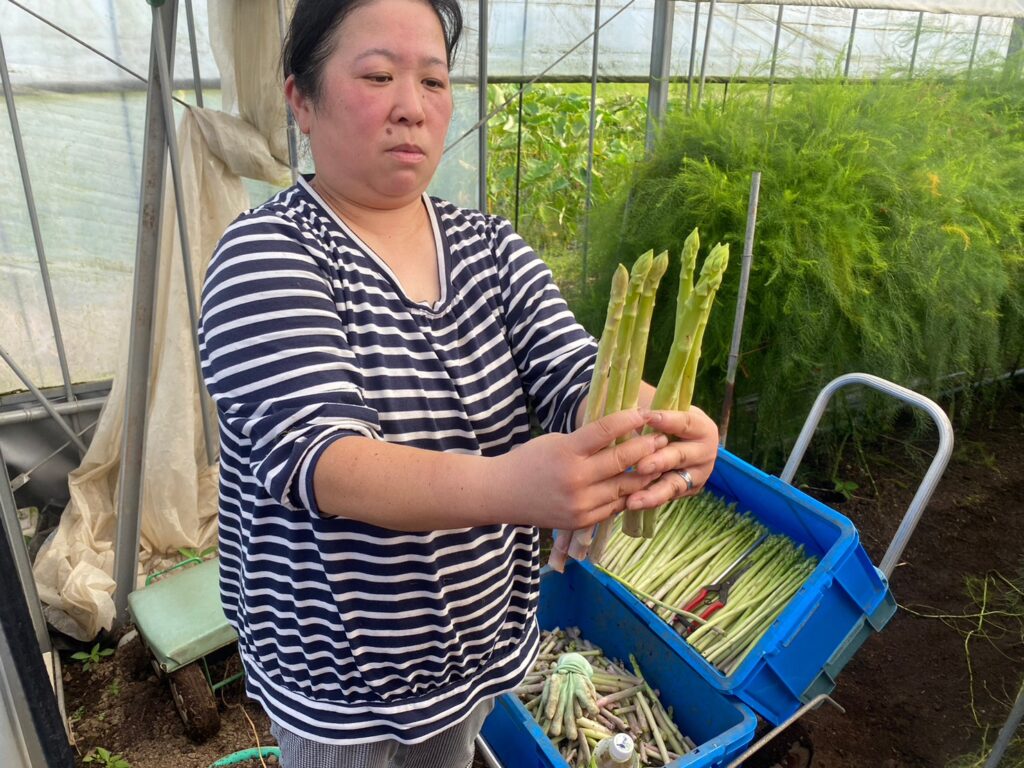
---What is the rewarding part of farming?
Mr. Fujiwara:I agree.Honestly, it's money, that is, sales.It's just like office workers look forward to payday.
--As an asparagus producer, are you concerned about consumer reactions?
Mr. Fujiwara:I'm still curious about the evaluation of what I sent with my face on it.Of course, we value all asparagus as a product, but being able to see our customers' faces makes us feel a stronger sense of responsibility, not only for the people who buy them, but also for us as sellers, and the reaction from our customers is also great. I'm curious about this.
So, what will happen to local agriculture in the future?
We asked whether there have been any changes in agriculture since it was certified as a World Agricultural Heritage Site, which is the theme of this article.
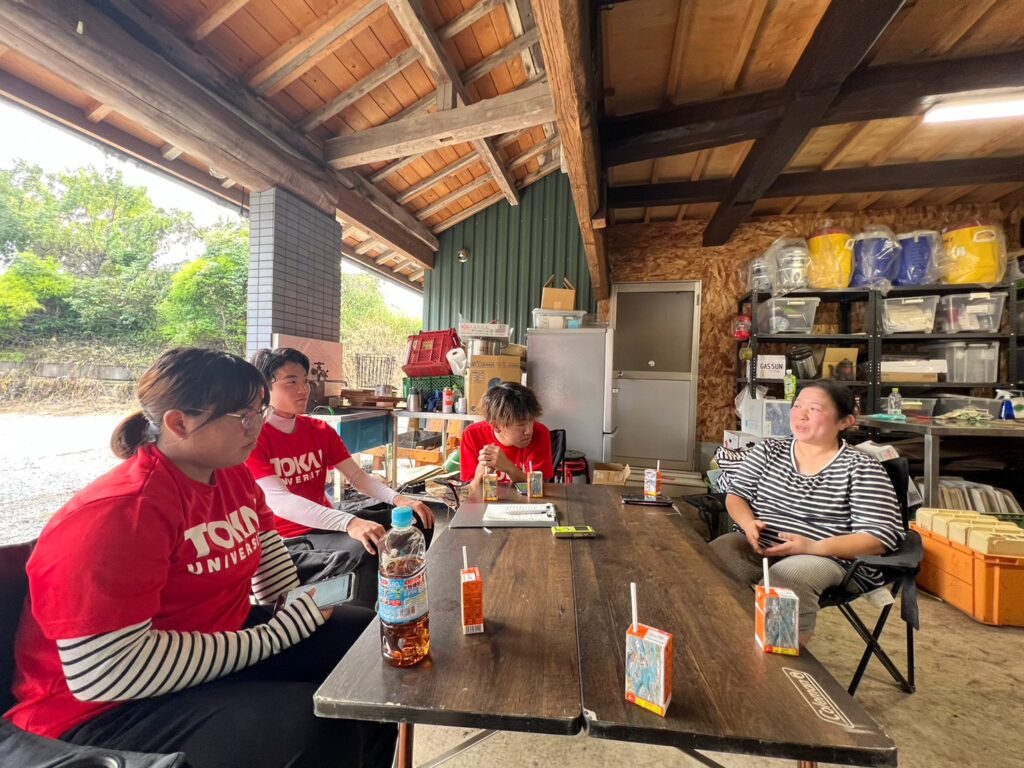
――Has anything changed since the Aso area has been certified as a Global Agricultural Heritage Site?
Mr. Fujiwara:Honestly, nothing has changed even though we have been recognized as a World Agricultural Heritage Site.However, considering that the World Agricultural Heritage designation is a recognition of Aso's agricultural efforts, I don't think it would be surprising if it changed.
---I'm sure many farmers are worried about the aging of the population and the decrease in the number of people who can help them.What do you think?
Mr. Fujiwara:Currently, the average age of farmers is 70 years old, and it is said that the industry will collapse in 30 years.In such a situation, due to the lack of young people, we, the mid-career generation, are still doing the things that our seniors used to do in their 40s.Therefore, there are no seats for young farmers.And there's no turn.
That's why we think closing the deal is also important.In order to pass it on to the next generation, it is important for the older generation to quit at the right time.
――What do you want to do in the future, Mr. Fujiwara?
Mr. Fujiwara:In the future, I would like to create a regional base.I want a local community where tourists can come, where locals can gather comfortably, and where I can live as I grow older.For tourists, we have something like a small cafe where they can serve rice balls and the like, and I think it would be great if we could become something like a local business.
After observing the asparagus harvesting process at the greenhouse, we had the opportunity to experience the process of carefully washing the trays used for asparagus harvesting with water using a sponge for about an hour.
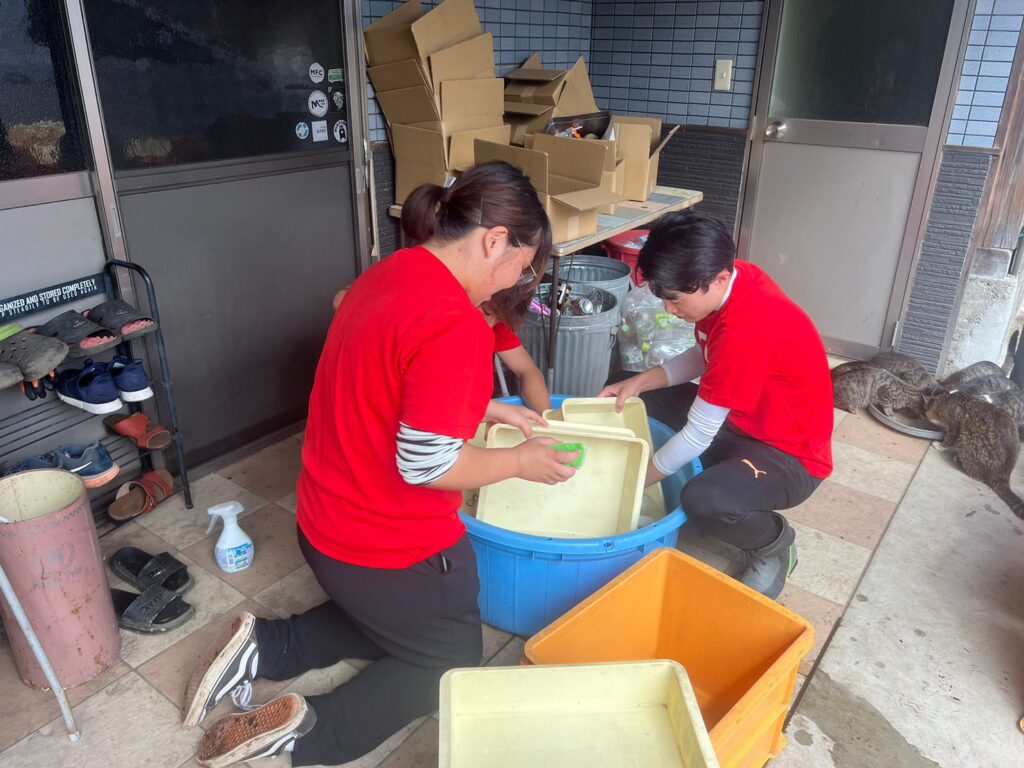
It's a simple task that local junior high school students also do as part of their agricultural experience, but considering there are so many trays and it is usually done by a small number of people, I felt it was a difficult task.After the work was completed, I was happy to hear that Mr. Fujiwara also told me that he was a great help.
After the interview, we ate fresh asparagus that had just been harvested at the house, simply boiled with salt, and asparagus bacon.It was crunchy and very delicious.
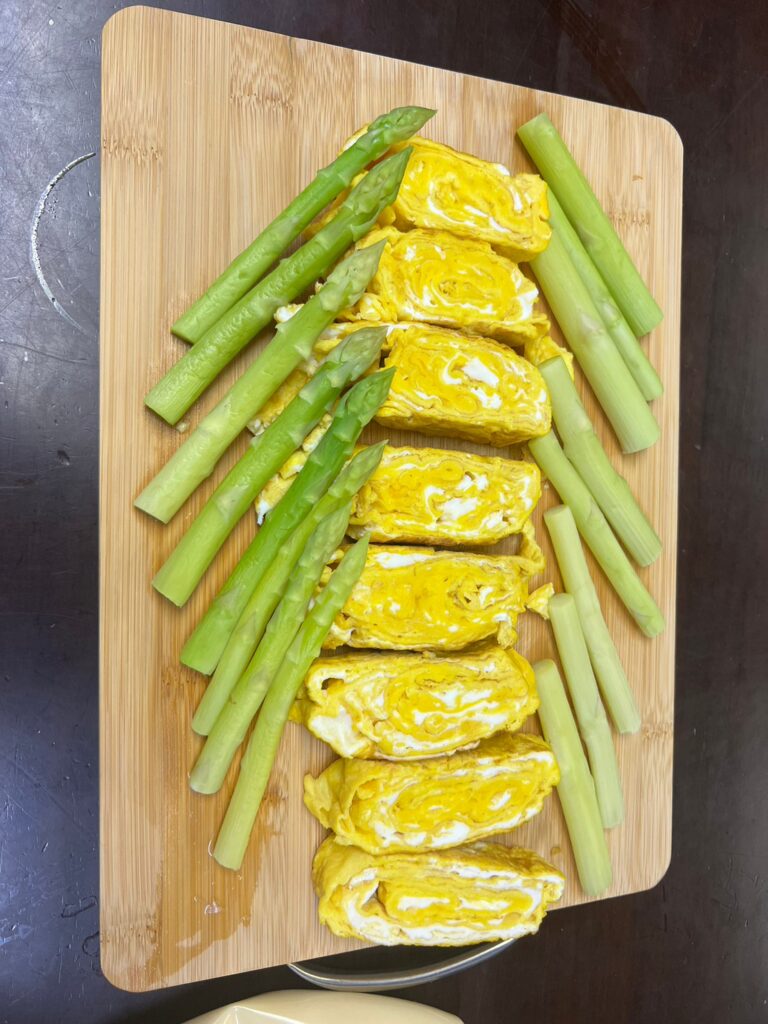
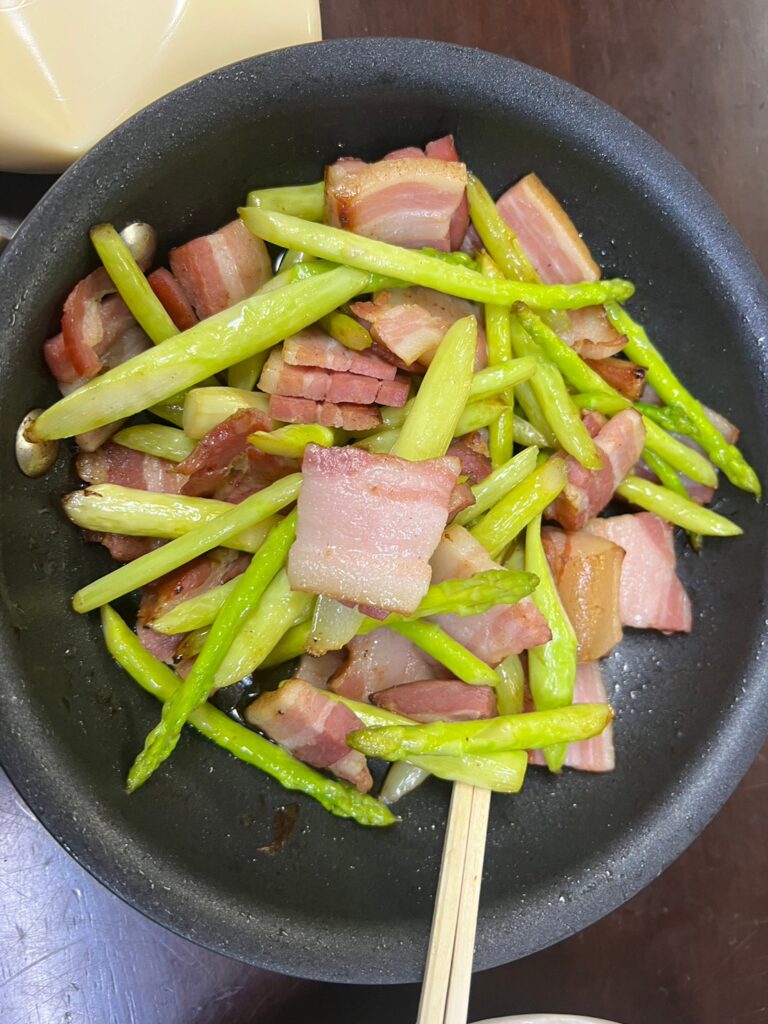
I don't usually buy and eat asparagus myself, but from now on I would like to enjoy Minamiaso's asparagus not only with the ingredients I receive, but also with various cooking methods.
Asparagus harvested at Mr. Fujiwara's farm can be purchased at various markets through JA Aso.Please find asparagus from Minamiaso and enjoy it.Once you try it, you'll definitely be hooked!
in conclusion

This time, I had the valuable experience of interviewing farmers for the first time.
During the interview, I learned about Mr. Fujiwara's passion for agriculture and how he thinks about the future of the region, and it became clear to me that Mr. Fujiwara's feelings for the region and farmers are stronger than most people. .
I was reminded once again that the Aso ingredients we eat every day are actually made possible by the daily efforts of these people, and I wanted everyone to learn about the importance of knowing about the farming industry. .
Tokai University Ecotourism Research Group 1nd year
Written by Ryota Katsume
